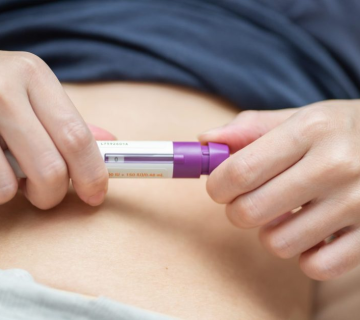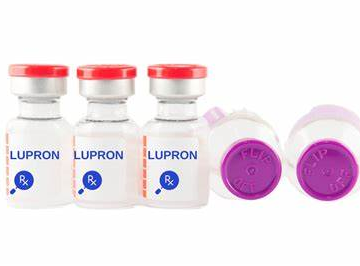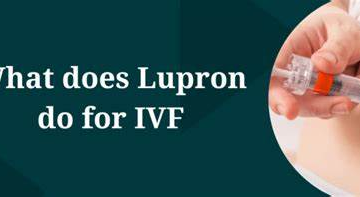
In vitro fertilization, or IVF, is a term you’ve probably heard before—maybe on TV, from a friend, or during a late-night scroll through the internet. It’s a process where doctors help people have babies by combining an egg and sperm outside the body, then placing the resulting embryo into the uterus. Since the first IVF baby, Louise Brown, was born in 1978, this technology has changed millions of lives. But what makes IVF so special? Why do so many people turn to it, and how can it help you or someone you love?
In this article, we’re going deep—way beyond the basics. We’ll explore the top advantages of IVF, backed by the latest research, real-life stories, and practical tips you won’t find everywhere else. Whether you’re curious about growing your family, facing fertility challenges, or just want to know more, this guide has you covered. Let’s jump in!
H1: Why IVF Stands Out as a Game-Changer
IVF isn’t just another medical procedure—it’s a lifeline for people who dream of becoming parents but can’t conceive naturally. Its advantages go beyond just “making babies.” It’s about hope, control, and possibilities that didn’t exist decades ago. Here’s why it’s such a big deal.
H2: Offers Hope for Infertility
Infertility affects about 1 in 10 couples worldwide. That’s millions of people who might feel stuck or hopeless. IVF steps in as a powerful solution, turning “maybe never” into “maybe now.”
-
- Core Idea: IVF helps people with blocked tubes, low sperm count, or unexplained infertility have a shot at parenthood.
-
- Details: For example, if a woman’s fallopian tubes are damaged (maybe from an infection or surgery), natural conception is tough because the egg can’t meet the sperm. IVF skips that step by fertilizing the egg in a lab.
-
- Science Says: Studies show IVF success rates have climbed over the years. In 2021, the live birth rate for women under 35 was around 50% per cycle in top clinics, compared to just 8% in 1991.
-
- Tip: If you’re facing infertility, talk to a doctor about whether IVF could work for you. It’s not a one-size-fits-all fix, but it’s a solid starting point.
✔️ Good News: IVF has helped over 10 million babies be born globally since 1978.
❌ Heads-Up: It’s not a guarantee—success depends on age, health, and other factors.
H2: Works for All Kinds of Families
IVF isn’t just for married couples with infertility. It’s a tool for single people, same-sex couples, and anyone who wants a biological child.
-
- Core Idea: IVF opens doors for diverse family-building dreams.
-
- Details: A single woman can use donor sperm, while a same-sex male couple might pair IVF with a surrogate. For same-sex female couples, one partner’s egg can be used with donor sperm, and the other can carry the baby. It’s flexible!
-
- Real Example: Take Sarah, a 38-year-old single woman. She froze her eggs years ago, then used IVF with donor sperm to have her son last year. “It was my chance to be a mom on my terms,” she says.
-
- Tip: Research local laws—some places have rules about who can access IVF. Finding a supportive clinic is key.
✔️ Good News: IVF lets you build a family your way, no matter your relationship status.
❌ Heads-Up: Costs can add up, especially if you need donors or surrogates.
H1: How IVF Boosts Your Chances of Success
IVF isn’t magic, but it’s pretty close when you look at how it maximizes your odds of having a baby. Let’s break down the ways it puts science on your side.
H2: Targets Specific Fertility Problems
Unlike some treatments that just “hope for the best,” IVF tackles exact issues head-on.
-
- Core Idea: IVF can fix problems like low egg count, poor sperm quality, or endometriosis.
-
- Details: For men with low sperm motility (sperm that don’t swim well), a technique called ICSI (intracytoplasmic sperm injection) injects a single sperm right into the egg. For women with endometriosis, IVF bypasses inflammation that might stop implantation.
-
- Science Says: A 2023 study found ICSI boosts fertilization rates by 20-30% in cases of male infertility compared to standard IVF.
-
- Tip: Ask your doctor about add-ons like ICSI if you know your specific challenge—it could make a difference.
Quick Steps to Understand Your Options:
-
- Get tested to pinpoint your fertility issue (e.g., blood tests, semen analysis).
-
- Discuss with your doctor if IVF or IVF-plus (like ICSI) fits your case.
-
- Plan your cycle with a specialist who knows your story.
H2: Increases Egg and Embryo Options
Natural conception relies on one egg per month. IVF says, “Let’s make more!”
-
- Core Idea: IVF uses meds to produce multiple eggs, giving you more shots at a healthy embryo.
-
- Details: Fertility drugs stimulate your ovaries to release 5-15 eggs instead of one. Then, doctors pick the best embryos to transfer.
-
- Science Says: Research from 2024 shows women under 35 average 10-12 eggs per cycle, with 1-2 becoming top-quality embryos.
-
- Tip: Don’t stress about “leftovers”—extra embryos can be frozen for later tries or even donated.
✔️ Good News: More eggs mean more chances—think of it like rolling the dice multiple times.
❌ Heads-Up: Too many eggs can lead to a rare condition called OHSS (ovarian hyperstimulation syndrome), so doctors monitor you closely.
H2: Screens for Healthy Babies
Worried about passing on a genetic condition? IVF can help with that too.
-
- Core Idea: Preimplantation genetic testing (PGT) checks embryos for issues before they’re transferred.
-
- Details: If you or your partner carry genes for something like cystic fibrosis, PGT can spot it. Only healthy embryos get used.
-
- Science Says: A 2022 study showed PGT cuts the risk of genetic disorders by up to 95% in at-risk families.
-
- Real Example: Mike and Lisa, both 34, used PGT because Lisa’s family had a history of sickle cell disease. Their daughter was born healthy last spring.
-
- Tip: PGT isn’t cheap (around $3,000-$5,000 extra), so weigh the cost against your peace of mind.
PGT Pros and Cons:
| Pro | Con |
|---|---|
| Spots genetic problems | Adds to IVF cost |
| Reduces miscarriage risk | Not 100% foolproof |
| Peace of mind | Takes extra time |
H1: Flexibility and Control with IVF
IVF isn’t just about getting pregnant now—it’s about planning your future. Here’s how it gives you power over your fertility journey.
H2: Freezes Time with Egg or Embryo Banking
Life doesn’t always line up with baby-making plans. IVF lets you hit pause.
-
- Core Idea: You can freeze eggs or embryos for years, then use them when you’re ready.
-
- Details: A 30-year-old might freeze her eggs now and use them at 40, when natural fertility drops. Embryos freeze even better—90% survive thawing.
-
- Science Says: A 2024 report found babies from frozen embryos have the same health outcomes as fresh ones, debunking old myths.
-
- Tip: Freeze early if you can—egg quality peaks in your 20s and early 30s.
✔️ Good News: Frozen eggs or embryos are like a backup plan for your dreams.
❌ Heads-Up: Freezing costs $5,000-$10,000 upfront, plus $500 yearly storage fees.
H2: Lets You Choose When to Start
Timing matters. IVF puts you in the driver’s seat.
-
- Core Idea: You decide when to try for a baby, not your body’s schedule.
-
- Details: Maybe you’re finishing school, building a career, or waiting for the right partner. IVF lets you prep now and conceive later.
-
- Real Example: Jenna, 29, froze her eggs before cancer treatment. Five years later, she used them to have twins. “It gave me control when everything else felt out of my hands,” she says.
-
- Tip: Talk to your clinic about “elective freezing” if you’re not ready yet but want options.
Timeline Example:
-
- Age 28: Freeze 10 eggs.
-
- Age 35: Thaw, fertilize, and transfer.
-
- Age 36: Welcome your baby!
H1: IVF’s Hidden Benefits You Might Not Know
Beyond the obvious, IVF has some surprising perks that don’t always make headlines. Let’s shine a light on them.
H2: Reduces Multiple Pregnancy Risks
Twins sound cute, but they come with risks. IVF helps manage that.
-
- Core Idea: Single embryo transfer (SET) cuts the chance of risky multiples.
-
- Details: Old-school IVF often transferred 2-3 embryos, leading to twins or triplets (20-30% of cases). Now, SET is standard for younger women, dropping that rate to under 5%.
-
- Science Says: A 2023 study linked SET to fewer preterm births and healthier moms and babies.
-
- Tip: Ask your doctor about SET if you’re under 35—it’s safer and just as effective.
✔️ Good News: Fewer multiples mean less stress on you and your baby.
❌ Heads-Up: SET might mean more cycles if the first try fails.
H2: Boosts Research for Everyone
Every IVF cycle teaches us something new.
-
- Core Idea: IVF advances science, helping future families too.
-
- Details: Techniques like IVM (in vitro maturation—growing immature eggs in a lab) came from IVF research. They’re now cutting costs and risks for patients.
-
- Science Says: A 2024 trial showed IVM could save $2,000 per cycle by skipping heavy meds.
-
- Tip: If you’re part of IVF, you’re also part of a bigger story—ask about research trials you might join.
H1: Practical Tips to Make IVF Work for You
Ready to explore IVF? Here’s how to get started and boost your chances, based on the latest info and real-world advice.
H2: Prep Your Body and Mind
IVF isn’t just shots and labs—it’s a whole-life effort.
-
- Core Idea: A healthy you means a better shot at success.
-
- Details: Stress, diet, and sleep all play a role. Too much coffee or junk food? That might hurt egg or sperm quality.
-
- Science Says: A 2023 study found women who ate a Mediterranean diet (think veggies, fish, olive oil) had 15% higher IVF success rates.
-
- Tips:
-
- Cut back on sugar and processed stuff—aim for whole foods.
-
- Try yoga or meditation—stress can mess with hormones.
-
- Sleep 7-8 hours—your body needs it to heal and grow eggs.
-
- Tips:
✔️ Good News: Small changes can add up big-time.
❌ Heads-Up: Don’t beat yourself up—perfection isn’t the goal.
H2: Pick the Right Clinic
Not all IVF centers are equal. Here’s how to choose wisely.
-
- Core Idea: A great clinic can make or break your journey.
-
- Details: Look at success rates, but also vibe—do they listen? Are they clear about costs?
-
- Science Says: The CDC tracks clinic success rates—top ones hit 50-60% for live births in young patients.
-
- Steps:
-
- Check online reviews and CDC data (cdc.gov/art).
-
- Ask about their lab tech—like time-lapse imaging for embryos.
-
- Get a cost breakdown upfront—IVF averages $15,000 per cycle.
-
- Steps:
Clinic Checklist:
| Must-Have | Nice-to-Have |
|---|---|
| High success rates | Friendly staff |
| Clear pricing | Support groups |
| Modern lab | Flexible scheduling |
H1: The Future of IVF: What’s Next?
IVF isn’t standing still. New ideas could make it even better—and more accessible. Here’s a peek at what’s coming.
H2: Cheaper, Gentler Options
Big costs and heavy meds scare some people off. That’s changing.
-
- Core Idea: New tricks like IVM and microfluidics could lower the price tag.
-
- Details: IVM skips pricey drugs by maturing eggs in the lab. Microfluidics uses tiny chips to handle sperm and eggs, cutting lab costs.
-
- Science Says: A 2024 Japanese study predicts IVM could drop IVF costs by 20-30% in the next decade.
-
- Tip: Keep an eye out—ask your doctor if these are options yet where you live.
H2: Artificial Gametes on the Horizon
Imagine making eggs or sperm from skin cells. It’s not sci-fi anymore.
-
- Core Idea: In vitro gametogenesis (IVG) could revolutionize IVF.
-
- Details: Scientists are testing this in mice—human trials might be 5-10 years away. It could help people with no eggs or sperm, or same-sex couples have biological kids.
-
- Science Says: A 2024 Osaka University report says IVG human eggs could be ready by 2030.
-
- Tip: Stay curious—follow fertility news for updates on IVG.
H1: Your IVF Questions, Answered
Got questions? You’re not alone. Here are some big ones people ask, with straight-up answers.
H2: Does IVF Hurt?
-
- Answer: Not really, but it’s not a breeze either. Shots sting a bit, and egg retrieval feels like cramps (you’re sedated). Most say it’s worth it.
-
- Tip: Talk to your nurse about pain management—ice packs help with injections!
H2: How Long Does It Take?
-
- Answer: One cycle is about 4-6 weeks, from meds to pregnancy test. If it works, you’re pregnant in a month. If not, you might try again.
-
- Tip: Plan for downtime—stress less by clearing your calendar.
H2: Can I Afford It?
-
- Answer: It’s pricey—$15,000-$20,000 per cycle in the U.S. But insurance, grants, or clinics with payment plans can help.
-
- Tip: Look into groups like RESOLVE for financial aid options.
H1: Let’s Talk: Your Turn!
IVF is a big topic, and we’ve covered a lot—hope for infertility, better odds, control over timing, and even what’s next. But it’s not just facts—it’s personal. What do you think?
-
- Have you or someone you know tried IVF? Share your story below—we’d love to hear it.
-
- Got a question we didn’t answer? Drop it in the comments, and we’ll dig into it.
-
- Want more? Tell us what IVF topic you’d like us to tackle next—costs, side effects, whatever’s on your mind.
Let’s keep the conversation going. Your voice matters, and together, we can make sense of this amazing journey!




No comment